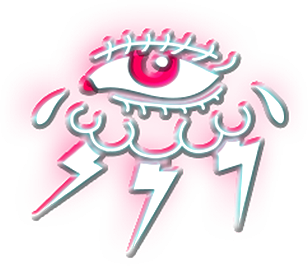🔥 Salt Snatchers and The Cosmic Stick-Up of Your Soul’s Swagger (with receipts)
There was a time when to steal a man’s salt was to steal the brightness from his bones. Salt theft or sabotage was an act of war and a crime punishable by death among other things.
SCN⁻ is like a cipher waiting to be inserted into half-finished equations
Here are a few intriguing, underdeveloped or overlooked domains where SCN⁻ could serve as a missing metabolic or symbolic link: 🧠⏳ 1. Chronobiology and Circadian Disruption The suprachiasmatic nucleus (SCN)…
⚗️ Alchemy’s Displacement and Chemistry’s Ascension
The French Revolution as both crucible and crucifix The French Revolution didn’t just decapitate monarchs — it decapitated paradigms. Chemistry, once entangled with alchemy’s mystical transmutations, emerged as a quantitative,…
🔥 Phlogiston vs SCN⁻: The Displaced Flame
Phlogiston (sometimes misrendered as “phlogostin”) was the name given to a fire-like principle in early chemistry — a substance thought to be released during combustion. It was: It was later…
The term “hormesis” derives from Greek hórmēsis for “rapid motion, eagerness”, itself from ancient Greek hormáein to excite. The same Greek root provides the word hormone.
Hormesis is a two-phased dose-response relationship to an environmental agent whereby low-dose amounts have a beneficial effect and high-dose amounts are either inhibitory to function or toxic. Within the hormetic zone, the biological response to…
Fossils as thunderstones
In many parts of southern England until the middle of the nineteenth century, another name commonly used for fossil Echinoids was ‘thunderstone’, though other fossils such as belemnites and (rarely) ammonites were also used for this…
Thunderstones in European Folklore
In Scandinavia thunderstones were frequently worshiped as family gods who kept off spells and witchcraft. Beer was poured over them as an offering, and they were sometimes anointed with butter. In Switzerland the owner of a thunderstone whirls…
A 12th century Bishop of Rennes asserted the value of thunderstones as a divinely appointed means of securing success in battle, safety on the sea, security against thunder, and immunity from unpleasant dreams
During the Middle Ages many of these well-wrought thunderstones were venerated as weapons, which during the “war in heaven” had been used in driving forth Satan and his hosts. Hence, in the 11th century…
Albanians believed the supreme powers of thunderstones were formed during lightning strikes
Albanians believed in the supreme powers of thunderstones (kokrra e rrufesë or guri i rejës), which were believed to be formed during lightning strikes and to fall from the sky. Thunderstones were preserved in family life…
Humans have been interested in echinoid fossils (the fossilised remains of sea urchins) for millennia, considering them lucky and imbuing them with magical powers linked to their deities
A folk tradition in Denmark and southern England imagined sea urchin fossils to be thunderbolts, able to ward off harm by lightning or by witchcraft, as an apotropaic symbol. Another version supposed they were…
Rhabdomancy is a divination technique which involves the use of any rod, wand, staff, stick, arrow, or the like
One method of rhabdomancy was setting a number of staffs on end and observing where they fall, to divine the direction one should travel, or to find answers to certain…










